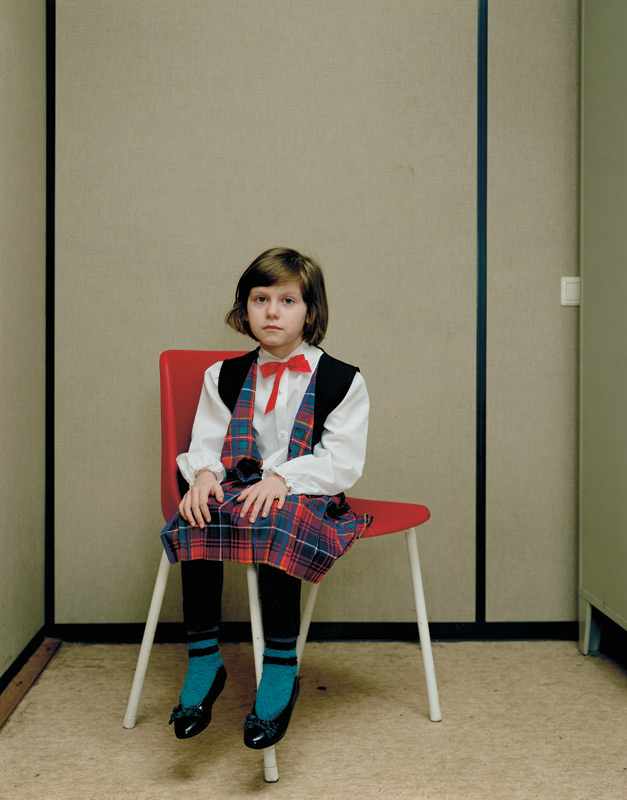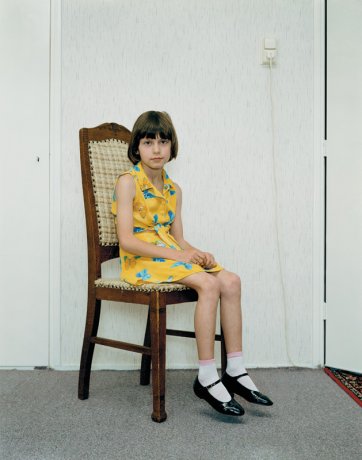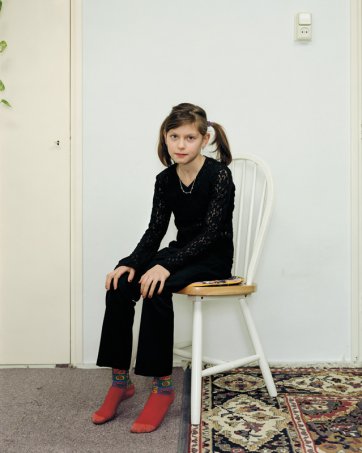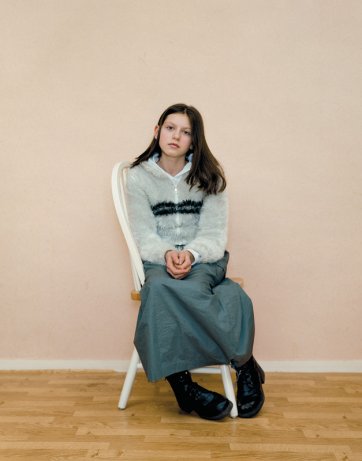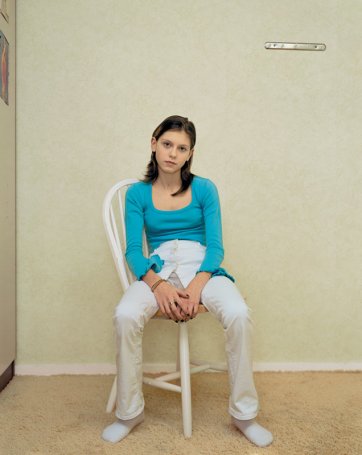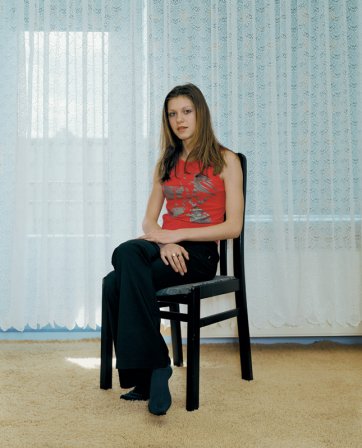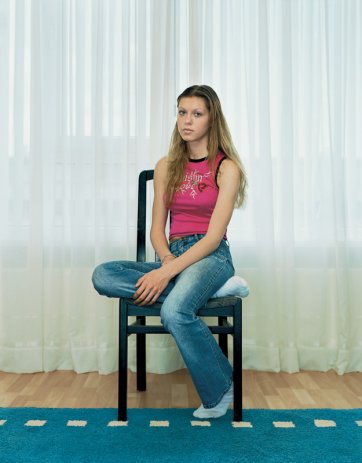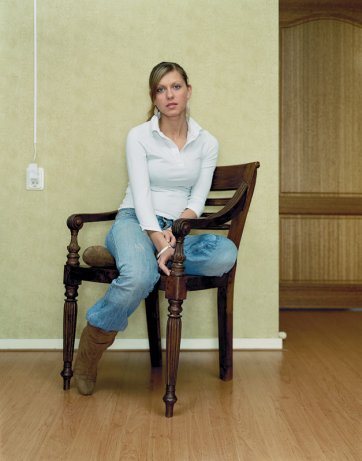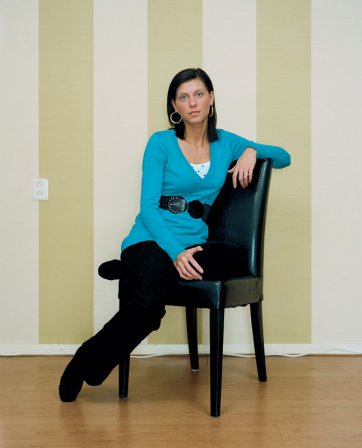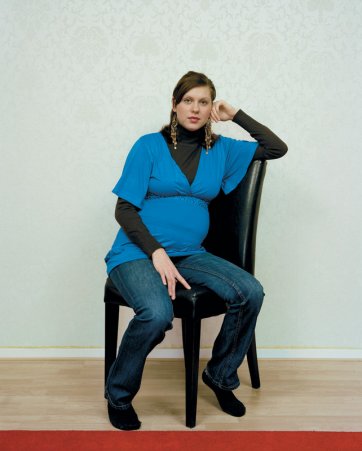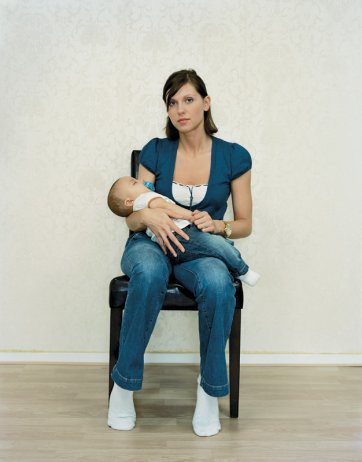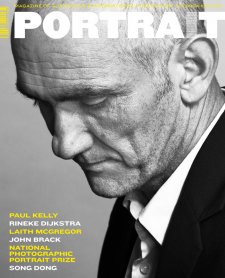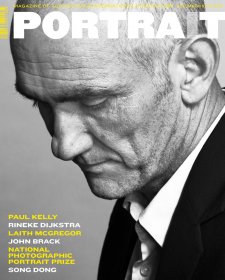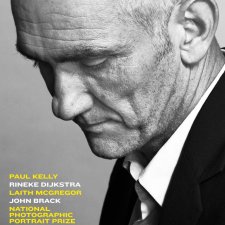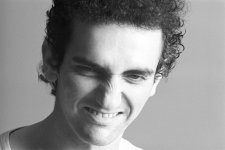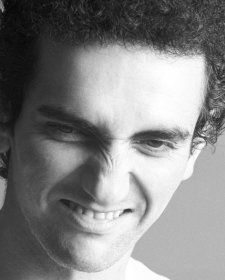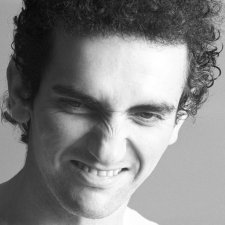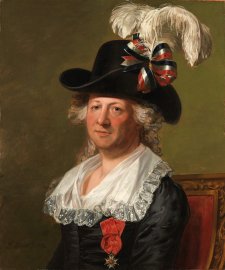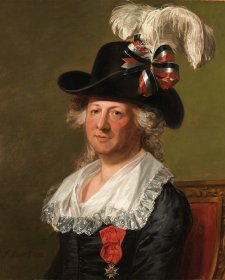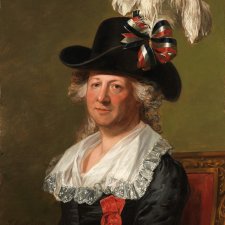Rineke Dijkstra’s portrait photography focuses specifically on children, adolescents, and young adults. She finds that they’re more open to being photographed, to the experience of being photographed, and she is specifically interested in the fact that they are in a transitional state. There is a certain awkwardness that might be intensified at some level by the experience of being photographed in a public space.
In 1994, she met a young girl at a refugee centre for Bosnian asylum seekers. She photographed this young girl, Almerisa, and a couple of years later she wondered what had happened to her and she looked her up, and that began a series of portraits.
Rineke Dijkstra: It was a commission to photograph children of asylum seekers, to draw attention to the bad situations that these kids were in. They were staying in the asylum centre all day long. I asked them to wear a nice dress because the photographs were going to be exhibited.
Almerisa Sehric: I met her in a refugee centre in Liden, in the Netherlands. I think we had just, one month, arrived in Holland so I didn’t know how to speak Dutch, the Dutch language. On one day there came a few photographers to the refugee centre, and in the whole month that we lived there, there was nothing. Every day was the same day, so suddenly there was something to do. And I remember it was one room, one big room, where Rineke was standing and she was making pictures of two other Bosnian girls and I started to cry because I wanted to be in the picture, too. Suddenly she noticed me and she came to me. She said, ‘Well, why are you crying?’ I don’t know how I expressed myself, but she understood me – that I wanted to be in the picture – so she asked me if I could change clothes, put on something nice. So, I went to my mother and my mother gave me this beautiful dress that you can see.
Dijkstra: Well, I had that picture and two years later I looked at it again, and I really liked that picture a lot, so I was just wondering what happened to her. I called the centre and they said: ‘well, she’s not living here anymore, but they have an apartment in the Netherlands.’ They gave me a phone number so I called Almerisa’s family and I visited them again, and from that moment on we became friends. I started to visit them, like, every six months or something, and then I started to make pictures every two years. So, what you see in this series is a girl who is from – originally she’s from Bosnia – an East European country, and how she develops from a child from a foreign country into a Dutch young woman.
Sehric: Every picture is taken in my own home with the best clothes I had or the clothes that I felt very comfortable and beautiful in. She always let me choose my own outfit so I was very happy with that. I remember in the third picture my mother and I went shopping for an outfit. It was new; it was special for Rineke’s visit. I also had ladybug nail artwork done all by myself. You will never notice those details if the photo is not that large. The best way that I can describe my photo sessions with her – it was like therapy. We always sat there and we were talking about everything: what’s going on in my life and what I was doing; with who I was hanging out; and some difficulties that came in my path, with boys or school or parents. And if she thought she saw a pose that she felt was expressing myself very well, then she was like, ‘Okay, hold on, don’t move,’ and I was like, ‘Okay, but … and then, click, “Okay, you can go on”.’
Rineke always caught the right picture, where you really could see who I was at that moment. I saw myself growing from a girl that came from Bosnia in a strange country with a different language, and the only thing that I had the same were my parents, everything else was all new for me. So, now when I look at the pictures I realize how lucky I am to have something like this whole series of me growing up to be an adult with my own babies.
Dijkstra: For Almerisa there is always a chair and the chair is changing, and I feel that if you use, always, the same elements, that you [begin] to compare the pictures among each other. So, they are responding to each other, they have an effect on each other.
Sehric: The chair represents my life. I see it that way because when I came to the Netherlands I was sitting on a plastic chair. And you see the chair [in] every other picture, some are the same chair, but the chair is always better and more beautiful and I see that it compares [to] my life. When I came to the Netherlands it was unstable like the plastic chair, and now I am sitting on a wooden chair with more stability, with my feet on the ground, and holding my first-born child. It’s amazing.
